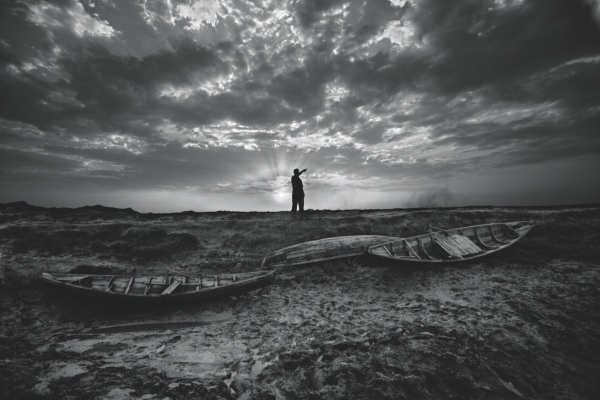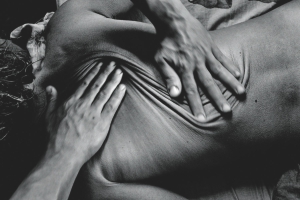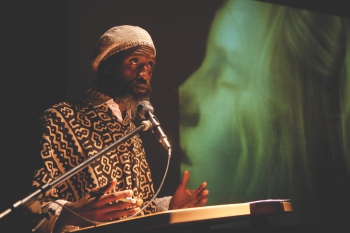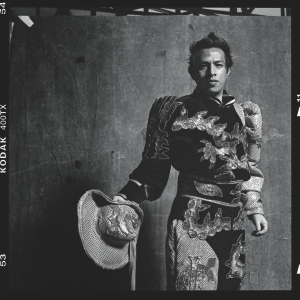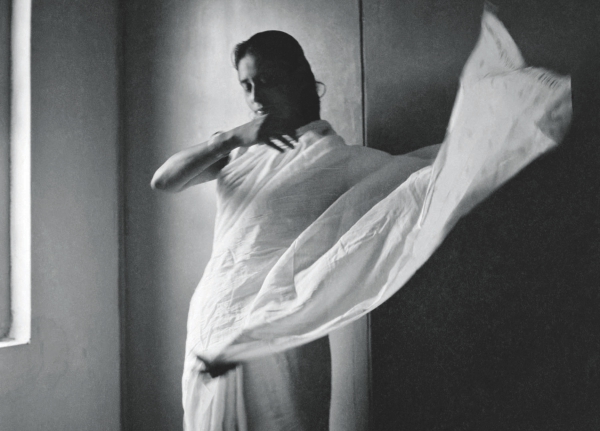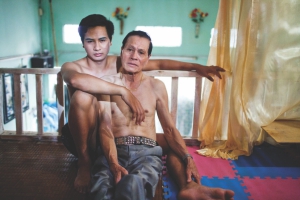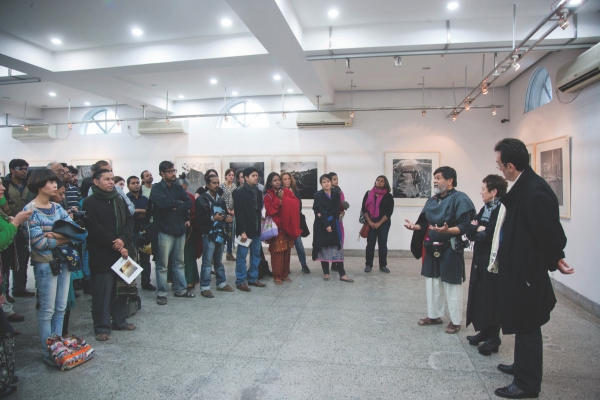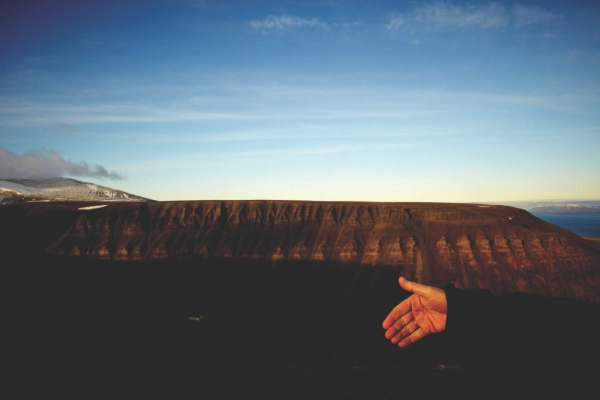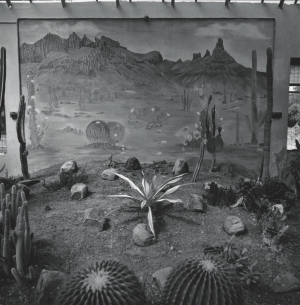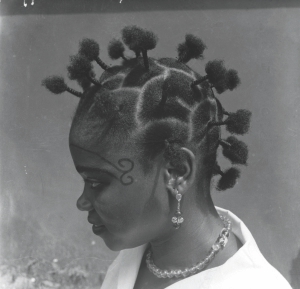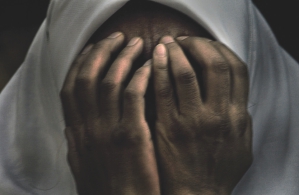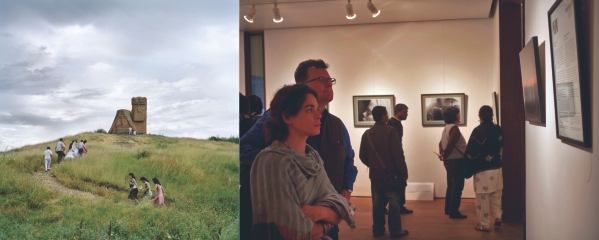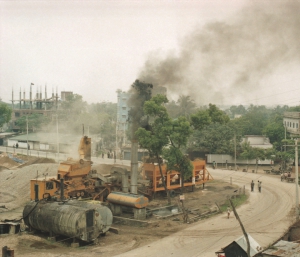| Home - Back Issues - The Team - Contact Us |
 |
| Volume 12 |Issue 05| February 01, 2013 | |
|
|
Cover Story UNFILTERED MOMENTS Anika Hossain
“A lack of everything that's important. I try to think of the "road." I can't. I'm utterly exhausted. I'm only going really because of the weather. The prospect of wind, snow, and my flashes on the beach keeps me awake. I'm scared as these few days I've only been thinking about her, and here I'll have the Baltic — my Baltic instead.”
These words are accompanied by a display of postcard-like photographs, which tell the story of a break up and its accompanying, unaccepted loneliness. The photographer, Mateusz Sarello is from Warsaw and his exhibition is titled “Swell.” His photos speak about unforgettable memories of places visited together. He talks about how a portrait on a negative was ruined by a lab technician. He says, the photos are just the beginning of the story and there is no end, yet. They say photography has always been associated with extremes. It has been about capturing epic moments of triumph, vanity, or wretched moments of despair. But what happens to the moments in between? The moments of doubt, moments of peace, quiet, and moments of love, loneliness and reflection are rarely perceived to be shutter worthy. This year however, a renowned international festival of photography has highlighted these unrecorded moments that serve to define us. In a gendered world, where frailty is considered effeminate and weak, where sex and violence are used to trample on the innocent, this year's Chobi Mela VII has chosen to bring forth and celebrate those fleeting moments of fragility which preserves our humanity, against the onslaught of invasive culture.
The Chobi Mela is the first festival of photography in Asia and perhaps one of the most successful ventures initiated by Drik, a multimedia organisation based in Bangladesh. The first Chobi Mela was held in 1999 and since then has been hosted in Dhaka every two years. It is possibly the most demographically inclusive photo festival in the world and this year it is hosting artists representing more than 24 countries including Norway, Italy, Iran, Poland, China, Egypt, Bosnia, Japan Bangladesh and many more. The themes of Chobi Mela are always chosen through an online forum by online polls. Each year, the theme is interpreted in exciting ways by different photographers. Among the previous themes were: Differences Unframed, Resistance, Exclusion, Boundaries, Freedom and Dreams. This year's festival, themed Fragility is expected to surpass the success of the previous events. “Our attempt had been to set up a platform for local photographers, so we could become our own story tellers,” says Shahidul Alam, the Director of Drik. “We set up our agency Drik, not in the capitals of photography of Paris, London or New York, but here in Dhaka, Bangladesh. While this was entirely appropriate politically and morally, it did have practical drawbacks. I had been to western festivals and saw how impossible it was for our photographers to show work in these festivals, or to have a chance to see the work of their international peers. Chobi Mela provides that much needed platform. It also allows us a scope to compare, share and be inspired by our own work. Since we document the entire festival, it is also becoming a repository of our photographic heritage.”
There are 35 gallery exhibitions and 10 mobile exhibitions at this year's Chobi Mela, and it is fascinating to see how each photographer has interpreted the theme in their own unique way. Mohammad Anisul Hoque, a Bangladeshi photographer has titled his exhibition “The Quest For Self,” and has focused on finding his true self in nature. His images are serene and intriguing and depict death, prayer, images of waterfalls and seas, all in dark tones and hues. Maika Elan from Hanoi has titled her exhibition, “The Pink Choice,” which focuses on couples of homosexual orientation in Vietnam. Although homosexuality is controversial in many places and openly accepted in others, there are many questions that arise about the way the couples live together and are intimate with each other. The photographer attempts to give us a glimpse into their lives through her colourful images. Ziyah Gafic from Sarajevo photographs simple objects– clocks, keys, combs and spectacles, things that the victims of genocide in Bosnia carried with them before they went missing and were presumably killed. 30,000 people were reported missing in this first act of genocide in Europe since the Holocaust.
Others captured in their images revolutions, victims of rape, urban pollution, urban repopulation, issues of race, religion and culture and so much more. “The range of work is much more diverse than it has ever been,” says Alam. “We also have many more international visitors, well over 150, many from countries that have never participated before, such as Iraq, Slovenia and Ghana. But I believe the major difference this year, has been in the fact that Bangladeshi organisations have taken greater ownership of the event and that some of the strongest work is from Bangladesh.”
A few of the many illustrious participants of this year's Chobi Mela are Ruth Eichhorn, Director of Photography for GEO magazines, Germany, Patrick Witty, International Picture Editor from TIME Magazine, US, Robert Pledge, President of Contact Press Images from Contact Press, US and Chris Rainier, long-time Contributing Editor for National Geographic Traveler Magazine. The event provides a great opportunity for upcoming young photographers to meet and display their work to such prominent personalities. “To be rubbing shoulders with the greats of the medium is always inspiring and Chobi Mela is part of the reason why Bangladesh has made such significant gains in the field of photography,” says Shahidul Alam, “But while Bangladeshi photographers are now amongst the finest in the world, the average photographer, members of university photo clubs or photography loving social media groups, today produce images that seasoned professionals would be stretched to achieve.” This festival also provides an educational opportunity for young photographers to hone their talents through workshops conducted by visiting experts from all over the world. Some of the workshops include Curating 101, Aesthetics in Photography, Traditional Printing, and Un-inventing Photographic practices, to name a few. The weeklong event will have morning and evening discussions, seminars and lectures and will initiate debates and discussions on issues central to contemporary photographic practice. as well as port folio reviews which will serve to inspire and assist our local photographers free of cost.
This year's Chobi Mela will give us spine-tingling glimpses of lost languages, vanishing cultures, disappearing natural beauty and raw vulnerability. Through this event, the shutter speed of 125th of a second, which used to be reserved for historic slices of time, has slowed down to find lost moments of equal, if not greater significance. Chobi Mela VII International Festival of Photography was launched on the 25 January and will be on till 7 February, 2013 in Dhaka, Bangladesh. For details regarding venue and time, please visit www.chobimela.org
Behind the Lenses Tamanna Khan
Images of life within a frame and outside of it are in view everywhere in Dhaka, at the exhibitions, workshops, presentations, lectures and discussions of Chobi Mela VII. Local and international fine art photographers, conceptual artistes and photojournalists have crowded the city, some bringing their work for the festival's viewers, some to share their knowledge and experience and others to teach and evaluate works of the new and upcoming. Ruth Eichhorn, photo editor of Geo Magazine, has come from Germany to do portfolio reviews and participate in discussions on magazine photography. Looking intently at Bangladeshi photographer Mohammad Anisul Hoque's 'Quest for Self' at the Bangladesh Shilpakala Academy, she says, “I am very impressed. I read the text and it is very philosophical. I am a little amazed to find something so deeply expressed in this country in this exhibition.” Ruth who is familiar with journalistic photographs from Bangladesh finds Hoque's non-journalistic pictures and their placement inside a temporary dark room within the gallery, interesting. “I was wondering why it is secluded from the rest. It is good to be in here and concentrate because it shows you kind of a different world. From the curating of the space, it was a nice idea to do this,” she commends.
B S Shivaraju alias Cop Shiva, whose work 'Being Gandhi' located in the open space of Chhobir Haat right by the busy university street, also appreciates the space chosen for his pictures. “Gandhi is an icon. Everybody knows him — who is this person and what this is. Even the rickshawalas easily understand these pictures,” he says. A self-taught photographer, Shivaraju says how his profession as a policeman in Bangalore gives him access to places not open to lay persons, allows him to work in the street and mingle with people easily. “I was on duty, when I met him (the performer in his pictures) in the street,” he says, adding that this school teacher from Karnataka has been doing this street performance, playing Gandhi, for 15 years without any recognition. While Shivaraju has brought the endeavour of a commoner to the world stage, Bangladeshi photographer Samsul Alam Helal, brings out the unfulfilled dreams and hidden wishes of the working class of Zurain through his exhibition 'Love Studio', displayed in the yard of the Institute of Fine Arts. “Some of them work in rolling mills, others in garments,” he describes the socio-economic background of his subjects, who often do not have enough money even to buy medicine. “Despite living amidst such hardship, when they go to a (photo) studio, they want to become whatever they like,” he says describing how the personality of ordinary people changes once they step into the make-belief world of the photo studio.
In fact, Morten Krogvold, the noted Norwegian photographer who has been conducting photography workshops in Bangladesh for quite sometime opines that Bangladeshi photographers should move away from the clichéd practice of photographing poverty and disaster. “Ninety percent of them are photographing poverty and slums. In the last workshop I asked them why are you doing it?” says the veteran photographer, sitting in an open air classroom at Pathshala for one of Chobi Mela's photography workshops. He says that portraying only these aspects of Bangladesh is unfair. “I am trying to ask them to do other stuff — beauty, middle-class, business-life — to show the world that this is a country which is also growing,” he argues. Bangladeshi photographer Rasel Chowdhury's 'Desperate Urbanisation' displayed at Shilpakala, may be a reflection of Krogvold's suggestion. However, Chowdhury stumbled into this subject as he had no choice left to work on, during the second year of his study at Pathshala. “I initially wanted to work on the encroachment of River Buriganga, but my teacher did not approve of it as many works had already been done on that subject,” he recounts how he changed his perspective and landed on urbanisation.
Nii Obodai, from Ghana also feels that photographers carry the responsibility of changing stereotypical perspectives of the world about their localities or regions. He says that there is an immediate shift in perspective when a photographer is taking pictures of his/her own culture. “When the culture speaks for itself it is vastly different when somebody else speaks for you.” Obodai who is curating a slide show on African photography says that his positive interactions with Festival Director, Shahidul Alam, two years ago, brought him to Chobi Mela VII, “to understand Asia which is far from the mindset of Africa in terms of cultural exchange. It is time we create a bridge. That is why I am here to represent and talk about African photography and be one of the people to open up, widen the space and create a deeper dialogue between the two cultures.”
When it comes to international coverage, photo editor of Time Magazine, Patrick Witty prefers giving the job to the most suitable photographer, someone he knows, rather than to an unfamiliar local photographer. Showing a few Time Magazine covers and pictures from inside stories, at a presentation on picture editing at the Goethe Institut, Witty observes how one has to find out new and innovative ways for presenting pictures in the shrinking print media industry. Regarding placement of pictures, he says, “When you edit for print you have to think about how pictures look next to each other which is a hugely different relationship on how they fit on top of each other. That's how you edit pictures online.” Though most pictures that Witty presents have been taken by men in conflict zones, he says, “Women work way better in the Arab world. There is less suspicion and they get way more access to women.” Witty's favourite Time cover is a portrait of an Afghan women by Jodi Bieber on Time's April 9, 2010 issue. Being a female photographer of the 1970s in Mexico, Graciela Iturbide never faced any difficulty. Rather, her support of feminist causes inspired many of her works including "Señora de Las Iguanas", ("Our Lady of the Iguanas"). She tells the story of a South American town where women dominate while presenting a slide show at Goethe Institut. Her exhibition 'Naturata' is on display at Alliance Francaise de Dhaka. Presented with the Lifetime Achievement Award in Chobi Mela VII, the 71-year-old photographer expresses her thanks to the festival. “I like Bangladesh very much and I hope to come back to take photographs and I am very happy about the prize. It is a great honour,” she says.
Coming to South Asia for the first time Chinese photographer Zhang Hai also finds the festival very dynamic. “I have never seen so many people who are so passionate about photography,” he says, “The entire curatorial team and the volunteers did a really good job having so many shows on the walls in such a short time. This is logistically a very big challenge.” Hai quitted his job as an architect to become a full-time photographer because he feels that photography helps him to see everyday life with a different eye and investigate the unknown. Hai's work 'Don't follow me, I'm lost' is on display at Bangladesh Shilpakala Academy. Iranian photographer Hossein Fatemi whose work 'Dark Future, Afghanistan' is being exhibited at Shilpakala opines that Chobi Mela provides a good platform for Asian photographers to exhibit their work and learn about others. “This is a big opportunity for photographers especially Middle East photographers. If there isn't any Chobi Mela, they must go to Europe or America and present their work themselves. Getting the European visa is difficult. As Iranians we cannot go to America. Plus it will be very expensive for us. This (Chobi Mela) is really great since all photographers of the Middle East can come here and present themselves to the world,” Fatemi expresses his gratitude on behalf of other photographers.
|
||||||||||||||||||||||||||||||||||||||||||||||||||
Copyright
(R) thedailystar.net 2013 |
|||||||||||||||||||||||||||||||||||||||||||||||||||
